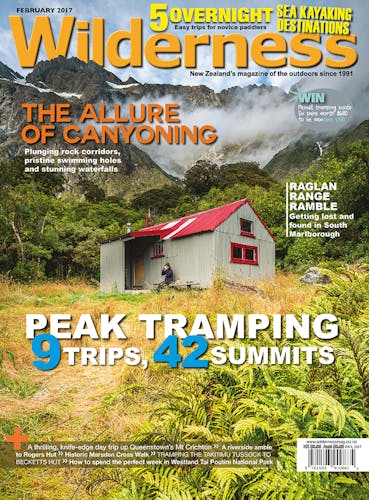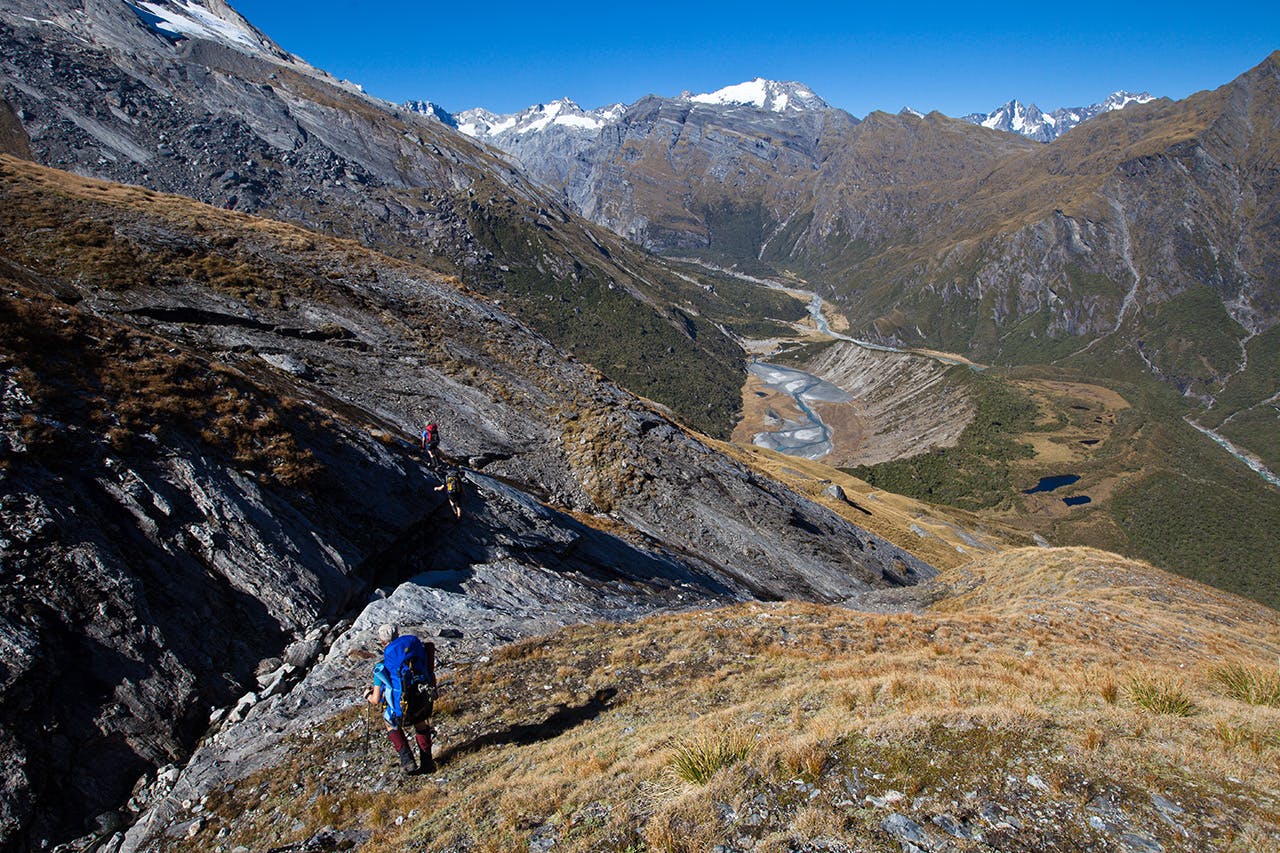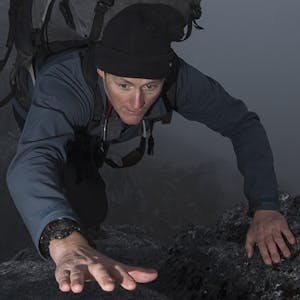Neil Silverwood climbs mountains and explores a wild coastline while exploring one of our most diverse outdoor playgrounds
Westland Tai Poutini National Park is an oddity. Many of our national parks have a clear boundary where human development ends and wild spaces begin, but Westland Tai Poutini is smack in the middle of the largest stretch of backcountry in New Zealand. It runs virtually unbroken from the top of the South Island right through to Fiordland. North of the park is the Adams Wilderness Area, east is Aoraki/Mt Cook National Park, south is the Hooker Landsborough Wilderness Area and to the west lies the Taman Sea.
It is also one of the most diverse parks in New Zealand, containing several significant peaks over 3000m. The rivers are pristine and free from development from source to sea. The Southern Alps and the Tasman Sea are never more than 50km apart and rivers drop steeply along their journey. The glacial fed waters have etched out deep canyons and river valleys – some of the most dramatic on the planet.
Many people come here to experience the twin glaciers – Fox and Franz Josef – but there is so much more to see and do.
The 1175km² park is a destination worthy of a month-long stay but, if you only have a week, here is where I’d start.
Take a walk on the wild side
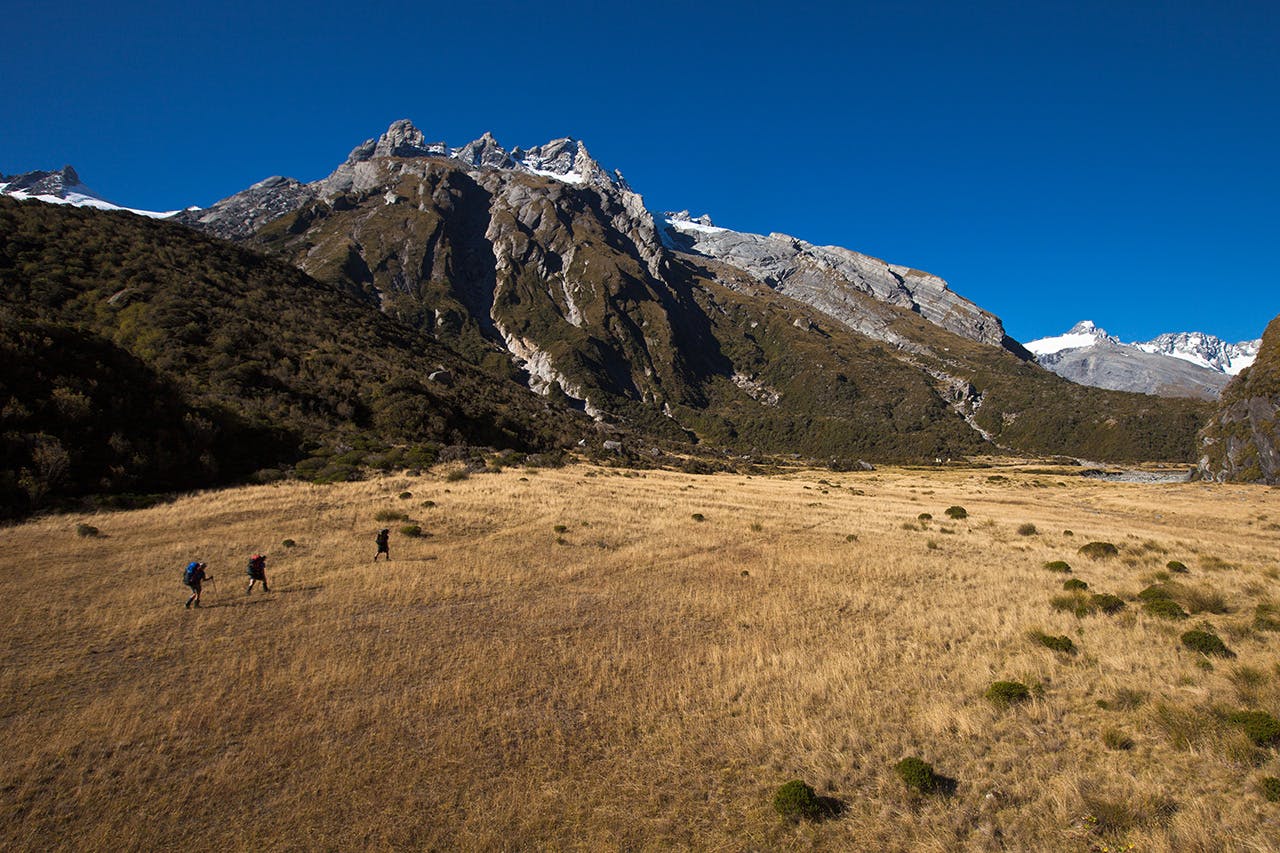
Crossing the river flats towards Horace Walker Hut – a mere spec beneath the bulk of Pioneer Peak. Photo: Mark Watson
One of the best tramps I’ve ever tackled is the Karangarua River-Douglas River-Red Deer Col loop. It’s got all the trademarks of a classic.
The tramp is grueling and involves ascending and descending thousands of vertical metres with a mixture of on- and off-track navigation in some of the most remote country imaginable. The route is also ringed with huts.
Park your car on the south side of the Karangarua River Bridge and make the gentle 3-4hr amble to Cassel Flat Hut. Don’t be fooled by the easy nature of the track – after the hut, the route becomes an honest grind up Regina Creek to the bushline and the end of the track. From here there are two options: in summer and good conditions, you can climb the ridge above and follow a poled route which sidles below Pt1850 to reach Horace Walker Hut. In winter, when the tops are covered by snow and avalanche conditions are present, you can take the low route. This involves dropping into the extremely rugged Douglas River Valley and pushing through kilometres of dense scrub to reach Horace Walker Hut. The party I was with chose this option and it took us three long days to make it from Cassel Flat Hut to Horace Walker.
Just before Horace Walker is an amazing canyon carved by centuries of water flowing from the Douglas Glacier terminal lake. You can lie on the edge, look down and just make out the river below as it plummets through the deep granite gash. This canyon has never been explored and due to the risk of flooding from snowmelt, or sudden icefall into the lake, it most likely never will be. I find it inspiring to know there are still uncharted corners like this.
Horace Walker is a cute four-bunk hut with a fire and feels a world away from anywhere. If time allows, it’s worth spending two nights and visiting Douglas Glacier or climbing one of the easy peaks nearby.
To finish the loop, head up Red Deer Col and cross back into the head of the Karangarua River. The northern side of the pass is steep and involves difficult route finding through small bands of cliffs. It’s exposed with slippery snowgrass. This route is not an option in bad weather. The descent into the Karangarua and on to Christmas Flat Hut is more moderate.
Christmas Flat is an idyllic place and if time allows, a great spot to while away an afternoon lying on the deck surrounded by ultra steep peaks.
The track to the road end takes another two days. The route is reasonably rugged, but compared to travel in the Douglas, it’s a relaxed affair.
Tip: Watch out for wild bulls and cows that are rumoured to inhabit the upper Karangarua – left over from when stock was run in the lower valley.
View a retreating glacier
Due to its fast retreat, access to the Franz Josef Glacier is difficult and the ice is now only accessible by air. The Alex Knob Track offers a cheaper way to see the glacier and it’s a terrific day trip, too.
Drive 2km up Franz Josef Road (or hike from the township) to the track – look for a sign on the right. The track begins in dense West Coast bush before breaking out above the bushline. The gradient is moderate throughout and the views of the glacier, Southern Alps and coast are mind blowing.
This is a lesser-known route than the typical walk to the tourist view point, but it’s well worth the extra effort and time. Allow 8hr return from the car park.
Location, location, location
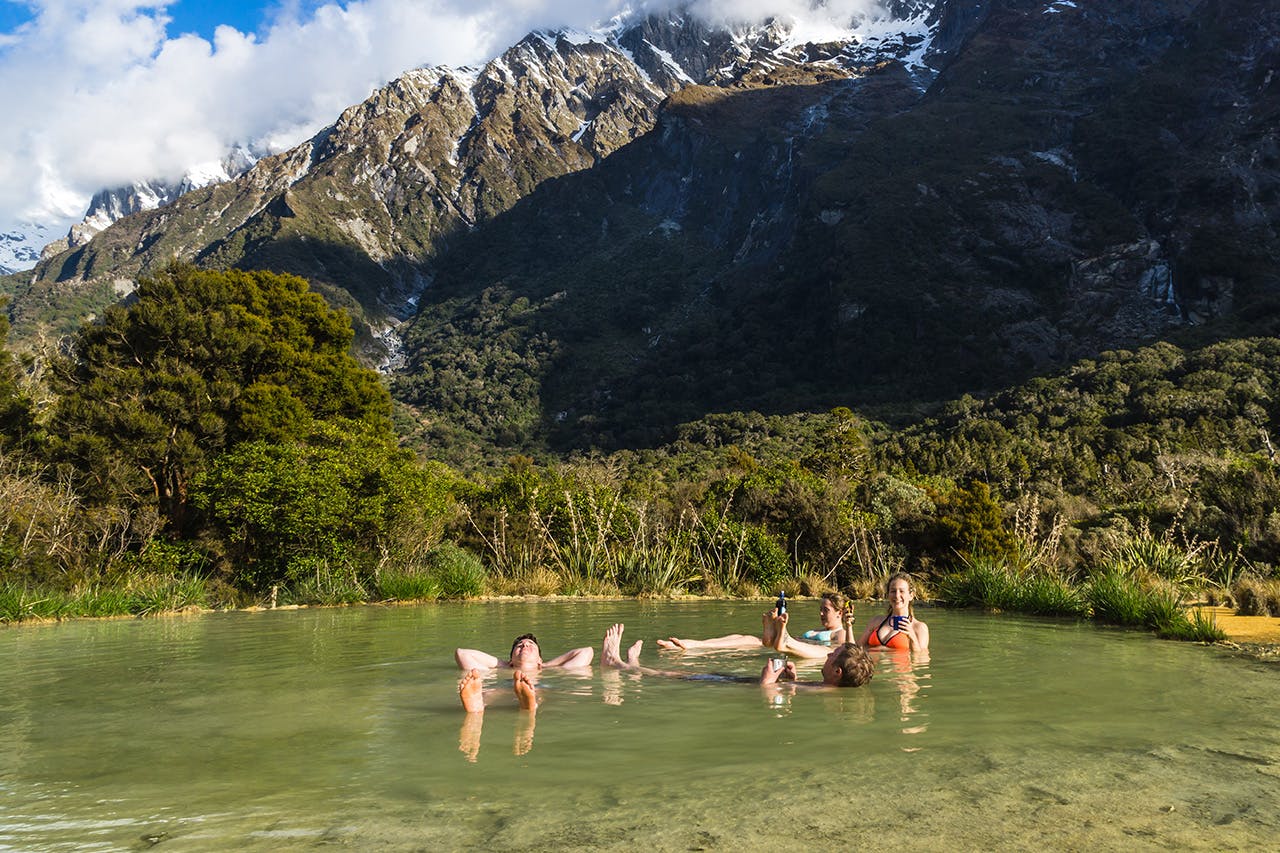
It’s all about location – not far from Welcome Flat Hut is this hot pool. Photo: Nick Couchand
There is perhaps nowhere in New Zealand quite as idyllic as the Welcome Flat Hot Pools. They are, however, extremely popular and it is best to go between April and October to avoid high season. Bookings at the Welcome Flat Hut are essential.
The Copland Track begins on the north side of the Karangarua River Bridge on SH6 and it’s a long, steady hike to Welcome Flat Hut – allow 6-7hr. The track is Great Walk-style: well graded and easy through beautiful native bush.
Welcome Flat Hut is not your typical backcountry hut. It’s two-storied and has 31 bunks. There’s also a private room that can be rented separately and a hut warden is in residence year-round.
The nearby rock biv is a good place to escape the crowds, but camping fees are charged and you might want to bring your tent inner to keep the sandflies at bay.
I once visited Welcome Flat in mid-winter; it was quiet and I sat in the pools alone, watching avalanches tumble off the surrounding mountains to crash into the valley below. It’s a scene still burned into my mind 10 years later.
Tramp and packraft a wild and deserted coast
Westland Tai Poutini National Park encompasses not just a few of New Zealand’s highest mountains, but also contains some of the wildest coastline. If you are lucky enough to own a packraft, then this trip might be just what you’re looking for.
From Gillespies Beach there is a classic two day trip that traverses some 26km of coast.
Start at Gillespies Beach and walk south. There are numerous deep and swift river crossings en route, many of which would be nearly impossible on foot. That’s where a packraft comes in handy. Take care not to get swept out into the waves breaking from the Tasman Sea.
One of the great features of this walk is it passes through large stands of kahikatea. Much of the original kahikatea along the West Coast were logged and the prized timber often used to make butter boxes.
During whitebait season you will meet locals at several of the river mouths who tramp or fly in to catch the prized commodity. Other than that, you’re unlikely to see another soul.
There are numerous camping spots along the way. The trip finishes at the stunning Bruce Bay.
Tip: This trip is best undertaken in a fine spell when Westland’s rivers are flowing clear. Ensure you carry a tide chart.
Escape the crowds
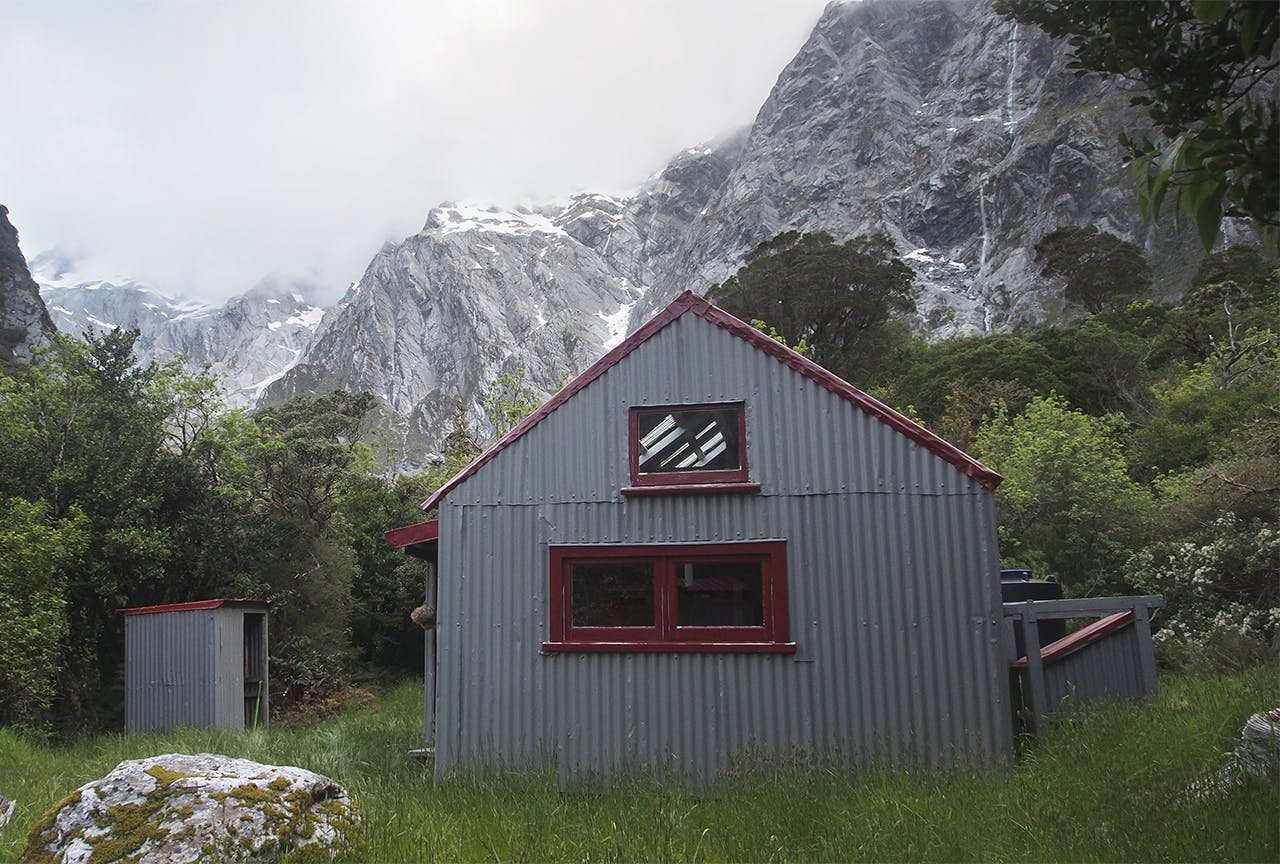
he eight-bunk Douglas Rock Hut is set in a grandiose location. Dan Dwyer/Creative Commons
The vast majority of people visiting Welcome Flat Hut venture no further up the valley than the hot springs. But beyond these is a slightly rougher track that follows the Copland River to the bushline.
It takes 3-4hr to reach the humble eight-bunk Douglas Rock Hut situated in a lovely, grandiose location. The hut is small, but warm and cosy and a far cry from the sometimes overrun Welcome Flat Hut.
Beyond Douglas Rock is the Copland Pass: a 2150m pass that allows a west to east crossing of the Divide. The route through the pass is best tackled by trampers with some basic mountaineering experience and equipment. For those without the required skill and gear, it’s best to walk back to the road end via Welcome Flat.
Note, there is at least one major stream crossing to reach Douglas Rock Hut and the route should not be attempted during or after heavy rain.
Tip: A nice way to tackle this trip is over three days, starting with a walk to Welcome Flat Hut and an evening soak in the hot pools. The next day, have another dip in the pools followed by the hike to Douglas Rock Hut in the afternoon. On the third day, make your way back to the Copland Track car park.
Watch the sunrise from Okarito Lagoon
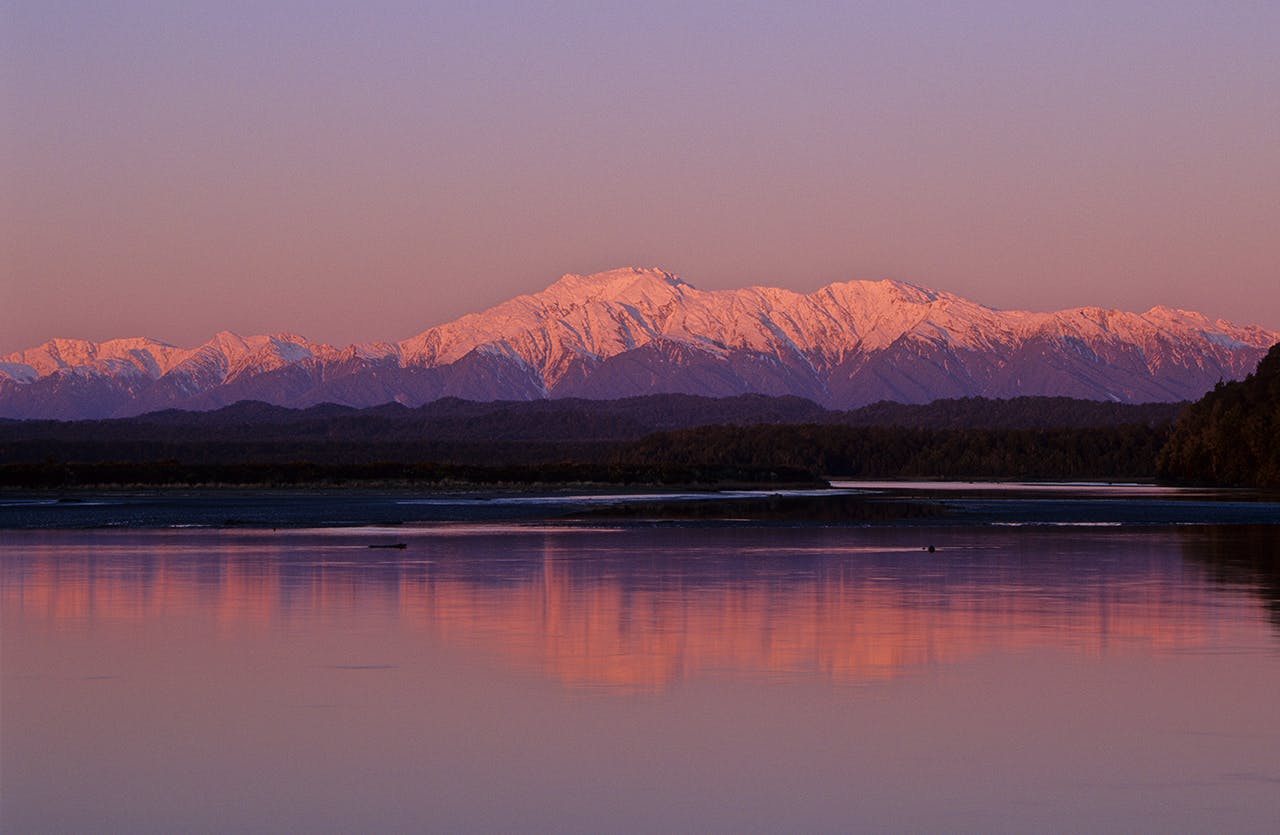
The Southern Alps tower over a mirror-calm Okarito Lagoon. Photo: Steve Baker/Black Robin Photography
Just north of Franz Josef township is the idyllic village of Okarito and Okarito Lagoon. The lagoon covers an area of 3240m2 and is the largest unmodified wetland in New Zealand. It is surrounded by mature rimu and kahikatea and is ideal for wading birds. It’s only place in New Zealand where you can see the rare white heron.
The best way to explore Okarito is by kayak – you can bring your own or hire one locally.
On a clear day, there’s a stunning view of the Southern Alps. In the mornings, mist often sits just above the water giving the place an otherworldly feeling. There is nothing more peaceful than paddling across the lagoon at dawn and watching the sunrise over the mountains. Paddling to the far end takes a couple of hours and there are several gorgeous inlets to explore. Spend at least half a day and if you can, sign up for a guided night tour of the lagoon for a chance to see the rarest kiwi species, rowi, in their last remaining wild location.





